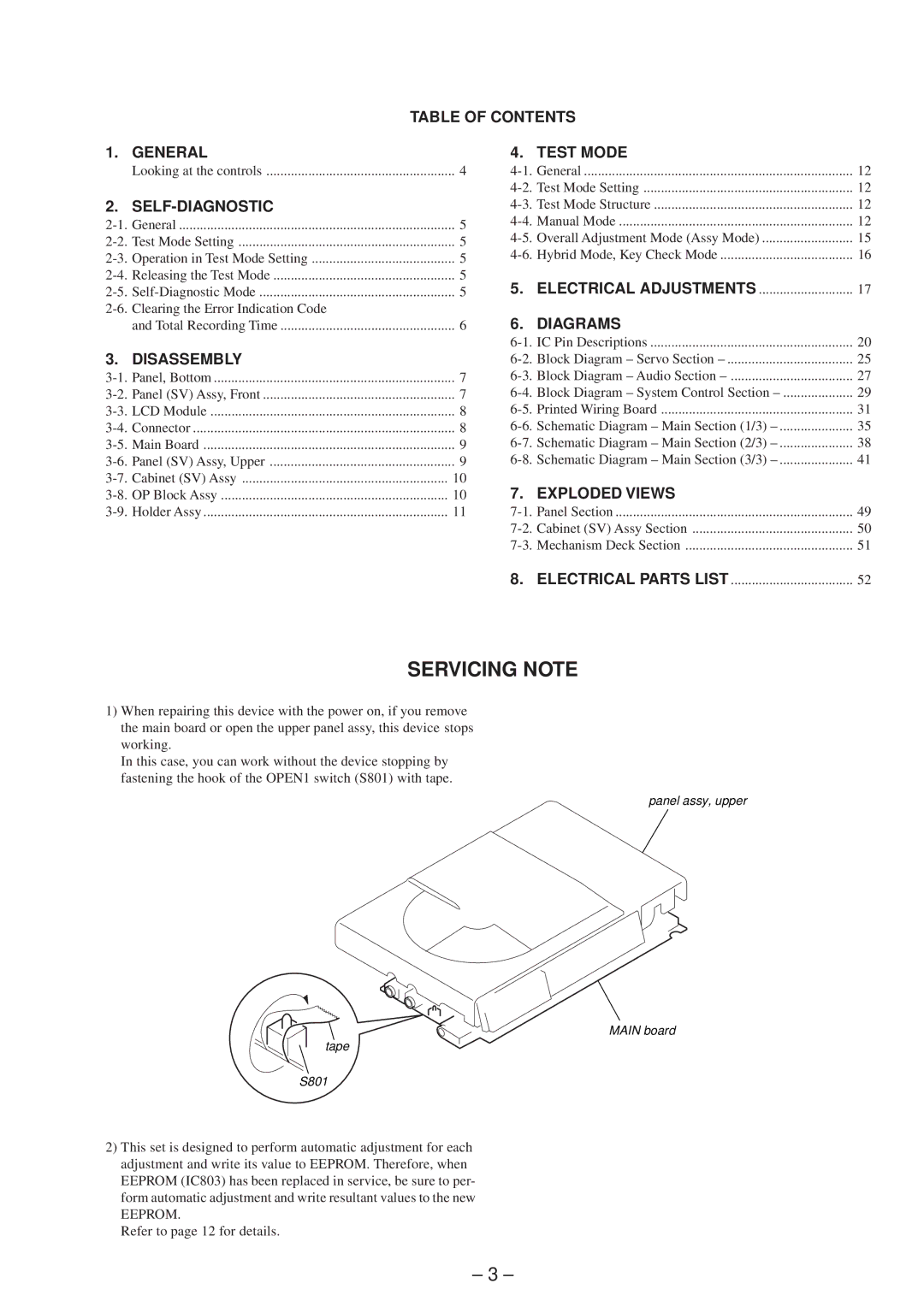
|
| TABLE OF CONTENTS |
| ||
1. | GENERAL |
| 4. | TEST MODE |
|
| Looking at the controls | 4 | 12 | ||
|
|
| 12 | ||
2. |
|
| 12 | ||
5 | 12 | ||||
5 | 15 | ||||
5 | 16 | ||||
5 | 5. | ELECTRICAL ADJUSTMENTS | 17 | ||
5 | |||||
| 6. | DIAGRAMS |
| ||
| and Total Recording Time | 6 |
| ||
|
|
| 20 | ||
3. | DISASSEMBLY |
| 25 | ||
7 | 27 | ||||
7 | 29 | ||||
8 | 31 | ||||
8 | 35 | ||||
9 | 38 | ||||
9 | 41 | ||||
10 | 7. | EXPLODED VIEWS |
| ||
10 |
| ||||
11 | 49 | ||||
|
|
| 50 | ||
|
|
| 51 | ||
|
|
| 8. | ELECTRICAL PARTS LIST | 52 |
SERVICING NOTE
1)When repairing this device with the power on, if you remove the main board or open the upper panel assy, this device stops working.
In this case, you can work without the device stopping by fastening the hook of the OPEN1 switch (S801) with tape.
panel assy, upper
MAIN board
tape
S801
2)This set is designed to perform automatic adjustment for each adjustment and write its value to EEPROM. Therefore, when EEPROM (IC803) has been replaced in service, be sure to per- form automatic adjustment and write resultant values to the new
EEPROM.
Refer to page 12 for details.
– 3 –
